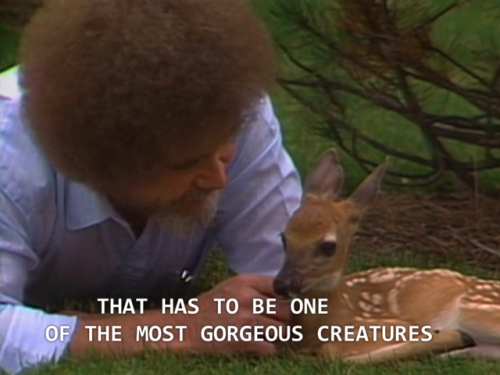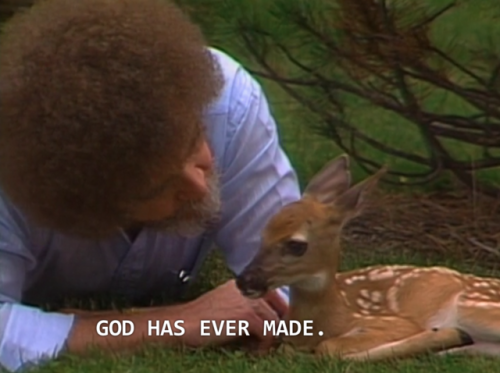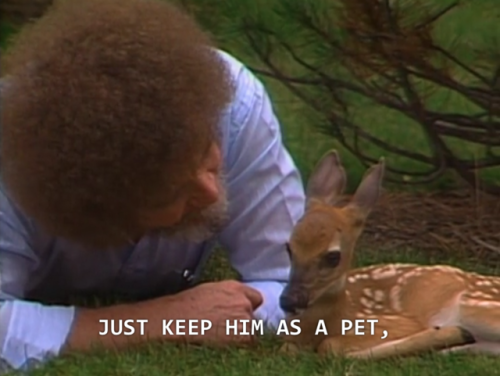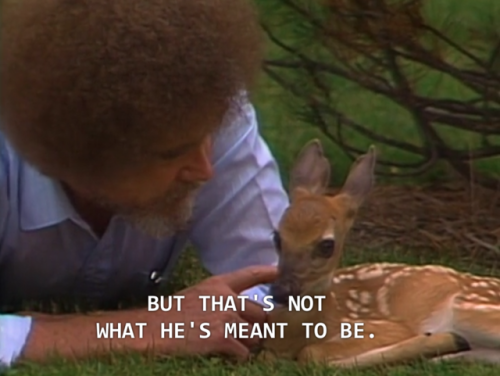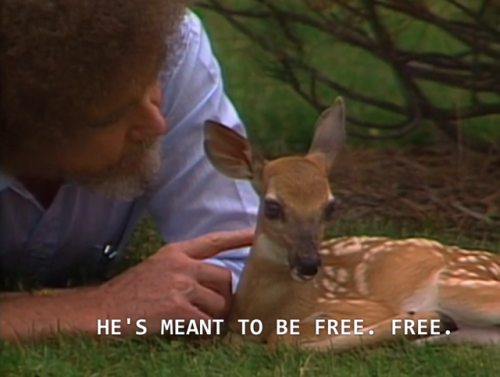It’s Really Not As Bad As You Might Think!
it’s really not as bad as you might think!
honey is the only food product that never spoils. there are pots of honey that are over five thousand years old and still completely edible
More Posts from In-pursuit-of-knowledge-blog and Others
The deep sea feather star may not have the fastest form of locomotion—but it’s possibly the prettiest!
Thank you to our colleagues at the Monterey Bay Aquarium Research Institute (MBARI) for this beautiful footage! Find out more about the life in the deep sea of Monterey Bay: https://mbayaq.co/2sAzy5e
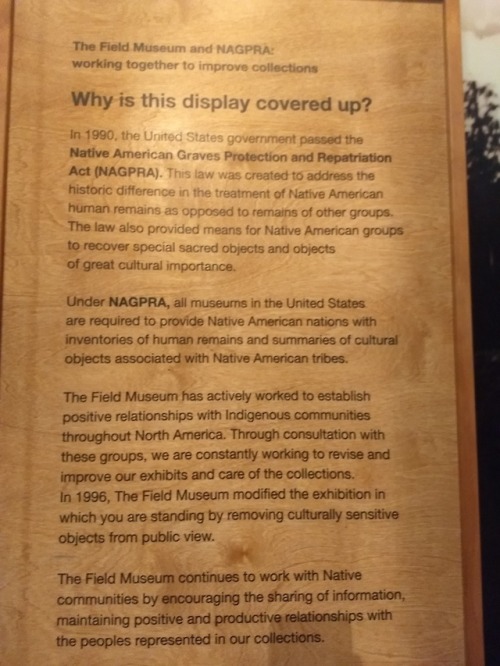
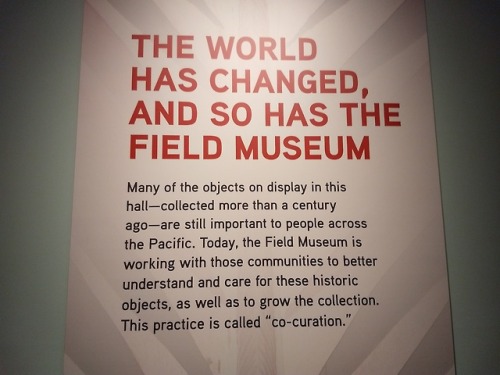
So I will admit I was feeling funny about going to the Field Museum because of the whole “look at display of objects from colonized groups” thing. Especially because of the Black Panther post with commentary on museums.
But boy, the Field Museum really does seem to be doing a fair amount towards rectifying past attitudes and actions. I took these two pictures and there were at least two others I wish I had remembered to take pictures of. I was thrilled to see such obvious mentions of this kind of thing instead of a lack of change or pretending it didn’t happen.
@kaijutegu I’ve been meaning to post these for the past few days, every time I see the BP museum post go by again!

Help Explore Your Own Solar Neighborhood
We’re always making amazing discoveries about the farthest reaches of our universe, but there’s also plenty of unexplored territory much closer to home.

Our “Backyard Worlds: Planet 9” is a citizen science project that asks curious people like you — yes, you there! — to help us spot objects in the area around our own solar system like brown dwarfs. You could even help us figure out if our solar system hosts a mysterious Planet 9!

In 2009, we launched the Wide-field Infrared Survey Explorer (WISE). Infrared radiation is a form of light that humans can’t see, but WISE could. It scans the sky for infrared light, looking for galaxies, stars and asteroids. Later on, scientists started using it to search for near-Earth objects (NEOWISE) like comets and asteroids.

These searches have already turned up so much data that researchers have trouble hunting through all of it. They can’t do it on their own. That’s why we asked everyone to chip in. If you join Backyard Worlds: Planet 9, you’ll learn how to look at noisy images of space and spot previously unidentified objects.
You’ll figure out how to tell the difference between real objects, like planets and stars, and artifacts. Artifacts are blurry blobs of light that got scattered around in WISE’s instruments while it was looking at the sky. These “optical ghosts” sometimes look like real objects.

Why can’t we use computers to do this, you ask? Well, computers are good at lots of things, like crunching numbers. But when it comes to recognizing when something’s a ghostly artifact and when it’s a real object, humans beat software all the time. After some practice, you’ll be able to recognize which objects are real and which aren’t just by watching them move!

One of the things our citizen scientists look for are brown dwarfs, which are balls of gas too big to be planets and too small to be stars. These objects are some of our nearest neighbors, and scientists think there’s probably a bunch of them floating around nearby, we just haven’t been able to find all of them yet.
But since Backyard Worlds launched on February 15, 2016, our volunteers have spotted 432 candidate brown dwarfs. We’ve been able to follow up 20 of these with ground-based telescopes so far, and 17 have turned out to be real!

Image Credit: Ryan Trainor, Franklin and Marshall College
How do we know for sure that we’ve spotted actual, bona fide, authentic brown dwarfs? Well, like with any discovery in science, we followed up with more observation. Our team gets time on ground-based observatories like the InfraRed Telescope Facility in Hawaii, the Magellan Telescope in Chile (pictured above) and the Apache Point Observatory in New Mexico and takes a closer look at our candidates. And sure enough, our participants found 17 brown dwarfs!

But we’re not done! There’s still lots of data to go through. In particular, we want your help looking for a potential addition to our solar system’s census: Planet 9. Some scientists think it’s circling somewhere out there past Pluto. No one has seen anything yet, but it could be you! Or drop by and contribute to our other citizen science projects like Disk Detective.
Congratulations to the citizen scientists who spotted these 17 brown dwarfs: Dan Caselden, Rosa Castro, Guillaume Colin, Sam Deen, Bob Fletcher, Sam Goodman, Les Hamlet, Khasan Mokaev, Jörg Schümann and Tamara Stajic.
Make sure to follow us on Tumblr for your regular dose of space: http://nasa.tumblr.com.


Flyover of Jupiters North Pole in Infrared via NASA https://ift.tt/2EM34s1
The "Frankenstein" Bog Mummies Of Scotland
More than a decade ago, a team of archaeologists found the buried bodies of a man and a woman in Scotland. They had died 3,000 years ago, but they weren’t buried right away. Instead, their bodies were thrown into the Scottish bog where they were preserved and mummified for 300 to 600 years before they were finally put underground. But the skeletons looked weird, to modern scientists. The woman’s jaw was a little too large for her skull, and the man’s limbs seemed out of place.
According to new isotopic dating and DNA experiments, the mummies— both the male and the female—were assembled from the body parts of at least six people! The woman came from individuals who died around the same time. But the man’s … components? … came from people who died hundreds of years apart.
Not only were the bodies assembled like Frankenstein, but they were interred in an odd way too. The bodies were removed from the peat bog after preservation, but before acid destroyed the bones, and then re-interred in soil, where the soft tissue broke down but the bones were preserved.
Why the burying, digging up, and burying again? Why the Frankenstein mismash of multiple bodies? Modern scientists have no idea, but there are plenty of theories, each a little wilder than the last.
Ave Imperator! We who are about to nap salute you!











-
 brainlessspiritoat reblogged this · 2 days ago
brainlessspiritoat reblogged this · 2 days ago -
 vanishingstream reblogged this · 2 days ago
vanishingstream reblogged this · 2 days ago -
 deadly-vuu reblogged this · 3 days ago
deadly-vuu reblogged this · 3 days ago -
 fauxrestry liked this · 3 days ago
fauxrestry liked this · 3 days ago -
 aurum-exnihilo reblogged this · 3 days ago
aurum-exnihilo reblogged this · 3 days ago -
 renisanz liked this · 4 days ago
renisanz liked this · 4 days ago -
 iamtheonethinginlifeicancontrol reblogged this · 4 days ago
iamtheonethinginlifeicancontrol reblogged this · 4 days ago -
 abacatemurxo liked this · 5 days ago
abacatemurxo liked this · 5 days ago -
 thunder-the-ranger-wolf reblogged this · 5 days ago
thunder-the-ranger-wolf reblogged this · 5 days ago -
 theperpetualartist reblogged this · 1 week ago
theperpetualartist reblogged this · 1 week ago -
 iwanttorunfree liked this · 1 week ago
iwanttorunfree liked this · 1 week ago -
 frangipani-wanderlust liked this · 1 week ago
frangipani-wanderlust liked this · 1 week ago -
 outshinethestars reblogged this · 1 week ago
outshinethestars reblogged this · 1 week ago -
 sixthreblogsthe6th reblogged this · 1 week ago
sixthreblogsthe6th reblogged this · 1 week ago -
 tuesdaymidnight liked this · 1 week ago
tuesdaymidnight liked this · 1 week ago -
 kaseymanning reblogged this · 1 week ago
kaseymanning reblogged this · 1 week ago -
 mindibindi liked this · 1 week ago
mindibindi liked this · 1 week ago -
 sarah-withanh reblogged this · 1 week ago
sarah-withanh reblogged this · 1 week ago -
 thelonebookman liked this · 1 week ago
thelonebookman liked this · 1 week ago -
 planetpluuto liked this · 1 week ago
planetpluuto liked this · 1 week ago -
 nightingalesunshine reblogged this · 1 week ago
nightingalesunshine reblogged this · 1 week ago -
 travelingstrawberry reblogged this · 1 week ago
travelingstrawberry reblogged this · 1 week ago -
 lazyfunfestival liked this · 1 week ago
lazyfunfestival liked this · 1 week ago -
 travelingstrawberry liked this · 1 week ago
travelingstrawberry liked this · 1 week ago -
 repinipi liked this · 2 weeks ago
repinipi liked this · 2 weeks ago -
 straydogsandsaranghaes reblogged this · 2 weeks ago
straydogsandsaranghaes reblogged this · 2 weeks ago -
 rocknghorss reblogged this · 2 weeks ago
rocknghorss reblogged this · 2 weeks ago -
 bowithoutadaemon liked this · 2 weeks ago
bowithoutadaemon liked this · 2 weeks ago -
 bowithoutadaemon reblogged this · 2 weeks ago
bowithoutadaemon reblogged this · 2 weeks ago -
 ellanarose reblogged this · 2 weeks ago
ellanarose reblogged this · 2 weeks ago -
 my-name-is-muddy reblogged this · 2 weeks ago
my-name-is-muddy reblogged this · 2 weeks ago -
 atsa-canned-turnip reblogged this · 2 weeks ago
atsa-canned-turnip reblogged this · 2 weeks ago -
 naiadbookworm reblogged this · 2 weeks ago
naiadbookworm reblogged this · 2 weeks ago -
 forest-vampire reblogged this · 2 weeks ago
forest-vampire reblogged this · 2 weeks ago -
 chirishman reblogged this · 2 weeks ago
chirishman reblogged this · 2 weeks ago -
 littledevil26 reblogged this · 2 weeks ago
littledevil26 reblogged this · 2 weeks ago -
 psychologica-warfare-and-cats reblogged this · 2 weeks ago
psychologica-warfare-and-cats reblogged this · 2 weeks ago -
 lavaaaaaaaaaaaaaaaaa liked this · 2 weeks ago
lavaaaaaaaaaaaaaaaaa liked this · 2 weeks ago -
 marsfingershurt reblogged this · 2 weeks ago
marsfingershurt reblogged this · 2 weeks ago -
 marsfingershurt liked this · 2 weeks ago
marsfingershurt liked this · 2 weeks ago -
 half-eaten-baguetteee reblogged this · 2 weeks ago
half-eaten-baguetteee reblogged this · 2 weeks ago -
 half-eaten-baguetteee liked this · 2 weeks ago
half-eaten-baguetteee liked this · 2 weeks ago -
 pirulated reblogged this · 2 weeks ago
pirulated reblogged this · 2 weeks ago -
 pirulated liked this · 2 weeks ago
pirulated liked this · 2 weeks ago -
 i-love-telemachus reblogged this · 2 weeks ago
i-love-telemachus reblogged this · 2 weeks ago -
 i-love-telemachus liked this · 2 weeks ago
i-love-telemachus liked this · 2 weeks ago
Once I was made of stardust. Now I am made of flesh and I can experience our agreed-upon reality and said reality is exciting and beautiful and terrifying and full of interesting things to compile on a blog! / 27 / ENTP / they-them / Divination Wizard / B.E.y.O.N.D. department of Research and Development / scientist / science enthusiast / [fantasyd20 character]
162 posts
